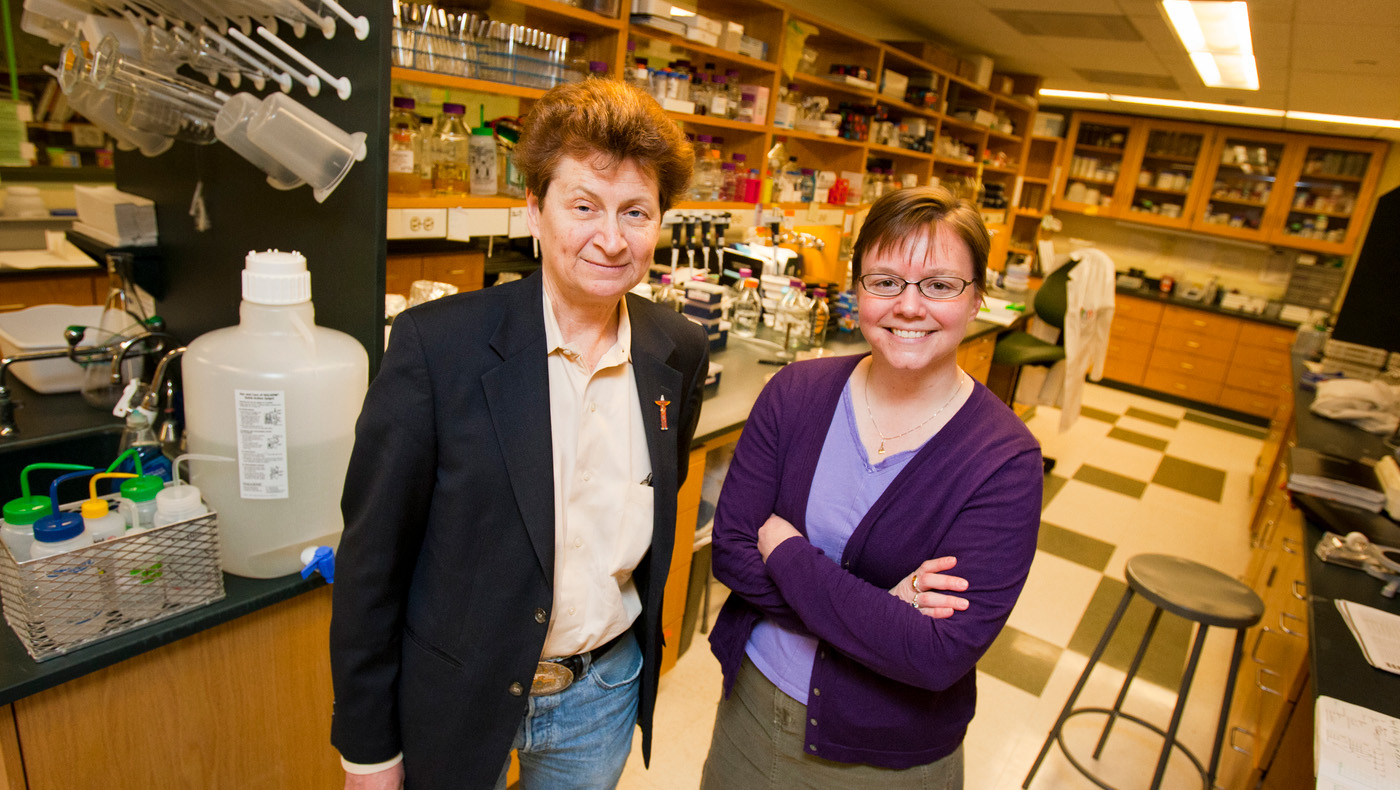The ability to sequence DNA, which led to the Human Genome Project, revolutionized biochemistry in the 90s. Northeastern Chemistry and Chemical Biology professors Mary Jo Ondrechen and Penny Beuning both noticed a key research area this technology opened: understanding enzymes, the biological proteins that DNA codes for to speed up chemical reactions. Ondrechen took a sabbatical to learn more about the implications of the new technology, and Beuning took time to learn more about DNA damage responses and the role of enzymes in the specificity of these responses.
As the understanding of enzymes has expanded, a new field has emerged: enzyme design. Many chemical reactions used by the chemical industry — to develop pharmaceuticals, cosmetics, pesticides, plastics, metals, recycling techniques, and more — require expensive processes, a lot of energy, extreme heat, and acidic environments. Enzymes can make these reactions work at room temperature in a neutral environment.
Ondrechen worked on developing computational methods to study how the structure of enzymes creates their functionality. In the lab, Beuning looked at how enzymes are able to become both precise in their function and very efficient. Around 2010, the professors started teaming up to combine their labs’ skills. Now, they’re working on a new National Science Foundation–funded project to finally understand the atomic-level interactions within enzymes in order to inform how scientists and the chemical industry might design new enzymes. Ondrechen and Beuning hope to provide researchers with the tools to perfect the practice that the body has started.
“I was interested in those questions about enzyme function,” Beuning said. Ondrechen “has the tools to really address those questions,” she added.
The new field of enzyme design typically uses brute-force methods to develop enzymes for specific industry applications over the course of years. The current method involves first using a computer program that attempts to create an enzyme with the desired function by placing active site amino acids in roughly the right place. Active sites are traditionally thought of as defining the function of enzymes based on their relative placement.
However, because the complex interactions between the amino acids that make up enzymes are poorly understood, it’s difficult to generate a good enzyme right off the bat. Once the computer generates a weak enzyme with roughly the right function, scientists vary the enzyme in hundreds of ways and test if any variants have improved function. Then, they pick the most promising and iterate over and over. It currently takes years to finally land on a strong enzyme with the desired function.
“If we can even just understand them a little bit more so that we can cut that down, I think that would be a big impact,” said Emily Micheloni, a PhD student working jointly in Beuning and Ondrechen’s labs.
Ondrechen and Beuning’s plan involves three objectives that they hope will finally shed light on the complex relationships between amino acids that make up the difference between strong and weak enzymes with virtually the same configuration of active sites.
“The idea is to provide guidance to the new field of enzyme engineering – to improve the activity of enzymes or generate novel activity,” Ondrechen said.
First, the team wants to track enzymes as they go through the long, iterative process of traditional gene design to identify which chemical properties get built into the enzymes as they slowly improve. Second, the team will look at an enzyme that loses virtually all of its function when a piece of the molecule far away from any active sites is altered, with the aim of teasing out how amino acids far away from an active site can affect the function of that site.
Finally, the team will put the pieces together in an example of how this new, knowledge-based, and precise enzyme design process works by starting with a known weak enzyme and evolving it into a similar known strong enzyme.
“We hope to show that our ideas are universal,” Ondrechen said. “If you want to improve activity, you have to build in these particular interactions … to get the right chemical properties.”
Undergraduate and graduate students have already made significant progress on the project. During the pandemic, when researchers couldn’t be in the lab, students who joined the project worked on searching databases and cataloging enzymes with different functions and strengths. Now, the labs host a handful of undergraduate and PhD students.
“The students have really driven this project,” Beuning said. “It’s been amazing.”
Micheloni is supporting the project through work on multiple of the team’s three aims. While the team uses their new theoretical and computational framework to predict which enzyme mutations will increase activity, Micheloni tests the variants to determine if they have the expected outcome. The joint teamwork between theory and experiment allows the team to quickly test predictions and refine their theoretical tools. The work has taught the team not only what can increase enzyme activity, but also everything that can kill it.
“We’re trying to figure out what’s changing Clark Kent into Superman,” Ondrechen said.
Photo by Dominick Reuter/Northeastern University

